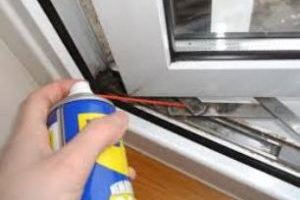Window Condensation Repair in Bedford: Understanding the Problem and Finding Solutions
Window condensation is a typical issue faced by homeowners in Bedford, especially throughout the cooler months. While a percentage of condensation can be harmless, excessive wetness can result in considerable issues, including damage to window frames, mold development, and even structural problems. This short article aims to provide a comprehensive guide to comprehending window condensation, its causes, and the steps homeowners can take to repair and prevent it.
Comprehending Window Condensation
Window condensation takes place when warm, damp air comes into contact with a cooler surface, such as a window pane. As the warm air cools, it loses its ability to hold moisture, triggering water droplets to form on the cooler surface. This process resembles how water droplets form on the exterior of a cold glass on a hot summer season day.
Typical Causes of Window Condensation
- High Humidity Levels: High indoor humidity is among the main causes of window condensation. Activities such as cooking, showering, and drying clothes indoors can increase humidity levels.
- Poor Ventilation: Inadequate ventilation can trap wetness inside the home, causing greater humidity levels and increased condensation.
- Single Pane Windows: Single pane windows are less energy-efficient and more susceptible to condensation compared to double or triple-pane windows.
- Temperature level Differences: Significant temperature distinctions between the inside and beyond the home can worsen condensation problems.
- Faulty Seals: Damaged or used window seals can permit cold air to go into the home, causing condensation on the window panes.
Signs of Window Condensation
- Water Droplets on Window Panes: Visible water droplets on the inside or beyond the window.
- Foggy Windows: A persistent foggy appearance on the window panes.
- Dampness Around Window Frames: Moisture building up around the window frames.
- Mold and Mildew Growth: Visible mold or mildew on window sills, frames, or walls near the windows.
Steps to Repair Window Condensation
Reduce Indoor Humidity
- Usage dehumidifiers to lower indoor humidity levels.
- Aerate bathrooms and kitchens by utilizing exhaust fans.
- Avoid drying clothing inside your home.
- Open windows for short durations to enable air blood circulation.
Enhance Ventilation
- Install and use exhaust fans in high-moisture locations.
- Make sure that all vents and ducts are clean and unblocked.
- Consider installing a whole-house ventilation system.
Update Windows
- Change single-pane windows with double or triple-pane windows.
- Choose windows with low-emissivity (Low-E) coatings to improve energy effectiveness.
- Install windows with insulating gas (such as argon) between the panes.
Repair or Replace Faulty Seals
- Examine window seals for damage or wear.
- Replace damaged seals with new weatherstripping.
- Think about professional window sealing services for severe concerns.
Usage Window Treatments
- Install blinds or drapes to assist insulate windows and reduce condensation.
- Use thermal window treatments to improve energy effectiveness.
Apply Anti-Condensation Coatings
- Apply special anti-condensation finishings to window panes to reduce moisture buildup.
- These finishings can be bought from hardware shops or applied by professionals.
Avoiding Future Window Condensation
Maintain Indoor Humidity Levels
- Utilize a hygrometer to keep an eye on indoor humidity levels.
- Go for a relative humidity of 30-50% to prevent condensation.
Routine Maintenance
- Tidy windows and window frames routinely to avoid mold and mildew growth.
- Examine and maintain window seals and weatherstripping.
Energy Efficiency
- Think about additional home insulation to reduce temperature level differences in between the within and beyond the home.
- Seal spaces around windows and doors to avoid cold air from going into.
Professional Inspections
- Arrange yearly inspections with a professional to determine and address possible problems before they become serious.
FAQs
Q: What is the perfect indoor humidity level to prevent window condensation?A: The ideal indoor humidity level to avoid window condensation is between 30% and 50%. Using a hygrometer can assist you keep track of and maintain these levels.
Q: Can I repair window condensation myself, or do I need professional help?A: Minor problems can frequently be addressed with DIY solutions such as decreasing humidity and improving ventilation. Nevertheless, for more extreme issues, such as malfunctioning seals or harmed windows, professional assistance is recommended.
Q: Are double-pane windows more effective in avoiding condensation than single-pane windows?A: Yes, double-pane windows are more efficient in preventing condensation because they provide much better insulation and reduce temperature level distinctions between the inside and outside of the home.
Q: Can window condensation trigger structural damage to my home?A: Yes, if left without treatment, window condensation can lead to structural damage. Wetness can trigger wood to rot, and mold development can deteriorate structure materials over time.
Q: How often should I check my windows for condensation issues?A: It is recommended to examine your windows for condensation concerns at least when a year. Repair My Windows And Doors can help you recognize and resolve problems before they become more extreme.
Window condensation is a typical issue that can lead to substantial issues if left unaddressed. By comprehending the causes and taking proactive actions to lower indoor humidity, enhance ventilation, and maintain window seals, property owners in Bedford can effectively handle and avoid window condensation. Routine upkeep and professional evaluations are likewise essential in guaranteeing the durability and efficiency of your windows. With the ideal technique, you can take pleasure in clear, dry windows and a comfortable, healthy home environment.

